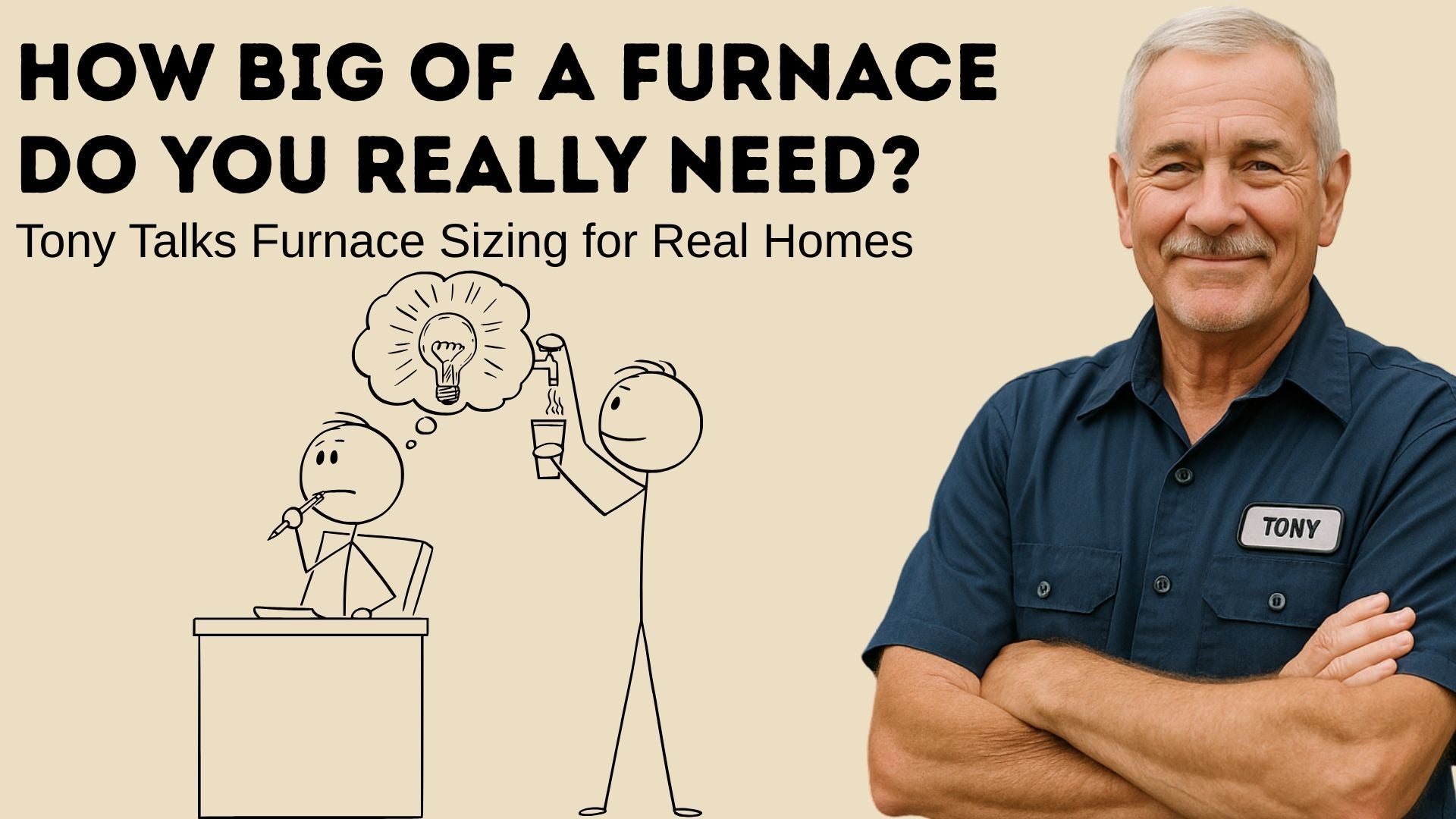Sizing a Furnace: Why It Matters More Than You Think
One of the biggest mistakes I see homeowners make is guessing when it comes to furnace size. Buy too small, and your furnace runs constantly. Go too big, and you waste money and comfort.
The Goodman GR9S960803BN clocks in at 80,000 BTUs, which is ideal for a medium to large home—but only if it’s properly matched to your space.
What Does BTU Even Mean?
BTU stands for British Thermal Unit, which is a fancy way of measuring how much heat a system can deliver. In furnace terms:
-
40,000–60,000 BTUs = small to medium homes (under 1,800 sq ft)
-
60,000–100,000 BTUs = mid-size to larger homes (1,800–2,500+ sq ft)
-
Over 100,000 BTUs = large homes or colder climates
An 80,000 BTU furnace like the GR9S960803BN is often a sweet spot for 2,000–2,400 sq ft homes depending on climate and insulation.
🔗 Read this guide on furnace sizing by HVAC.com
Things That Affect Furnace Size 📏
Here’s what I always look at before giving a homeowner a final furnace recommendation:
✅ Square footage
✅ Climate zone (North Dakota needs more BTUs than Georgia!)
✅ Insulation levels
✅ Window type and number
✅ Ceiling height
✅ Air leakage and ductwork quality
Even if two homes are the same size, they might need very different furnaces. That’s why a Manual J load calculation is so important.
🔗 Learn more about Manual J calculations – Energy Vanguard
When 80,000 BTUs Is Just Right
Let’s say you’ve got:
-
A 2,200 sq ft home
-
Located in a cold to moderate climate
-
With modern windows and good insulation
This Goodman model would likely be perfect. It delivers reliable heat without short cycling and without running 24/7. Plus, the 96% AFUE rating means you’re not burning extra gas.
🔗 How much furnace efficiency really matters – ENERGY STAR
Don’t Oversize! Here’s Why It Backfires
Oversizing a furnace sounds like a good thing—but it’s not. Here’s what happens when you go too big:
🚫 Short cycling – Furnace turns on/off frequently
🚫 Inconsistent heating – Hot spots and cold spots
🚫 Higher bills – Wasted fuel
🚫 Wear and tear – System breaks down sooner
Instead, get a unit that matches your home’s actual load. That’s where this Goodman model shines—it’s the right size for a lot of homes when sized properly.
How to Check If 80,000 BTUs Is Right for You
Best way? Get a Manual J calculation from a pro. But here’s a ballpark:
| Home Size (sq ft) | Climate Zone 1-2 | Climate Zone 3-4 | Climate Zone 5-6 |
|---|---|---|---|
| 1,800 | 60,000 BTUs | 72,000 BTUs | 84,000 BTUs |
| 2,200 | 72,000 BTUs | 84,000 BTUs | 96,000 BTUs |
🔗 Compare U.S. Climate Zones via DOE’s map
As you can see, 80,000 BTUs lands right in the middle of many needs.
Final Thoughts from Tony 🔩
Look, furnace sizing isn’t rocket science—but it’s also not something you want to guess on. Too small, you’re cold. Too big, you’re wasting money. The Goodman GR9S960803BN sits in a popular BTU range that covers a lot of homes—if it fits your load.
Before you buy, get a load calc done, talk to a tech (like me), and make sure you’re buying the right tool for the job. A properly sized, high-efficiency furnace like this one? It’s going to last you a long time and keep your bills low. 💪🔥
In the next topic you will read about: Is a Single-Stage Furnace Enough? Tony Breaks Down What Really Matters in 2025







